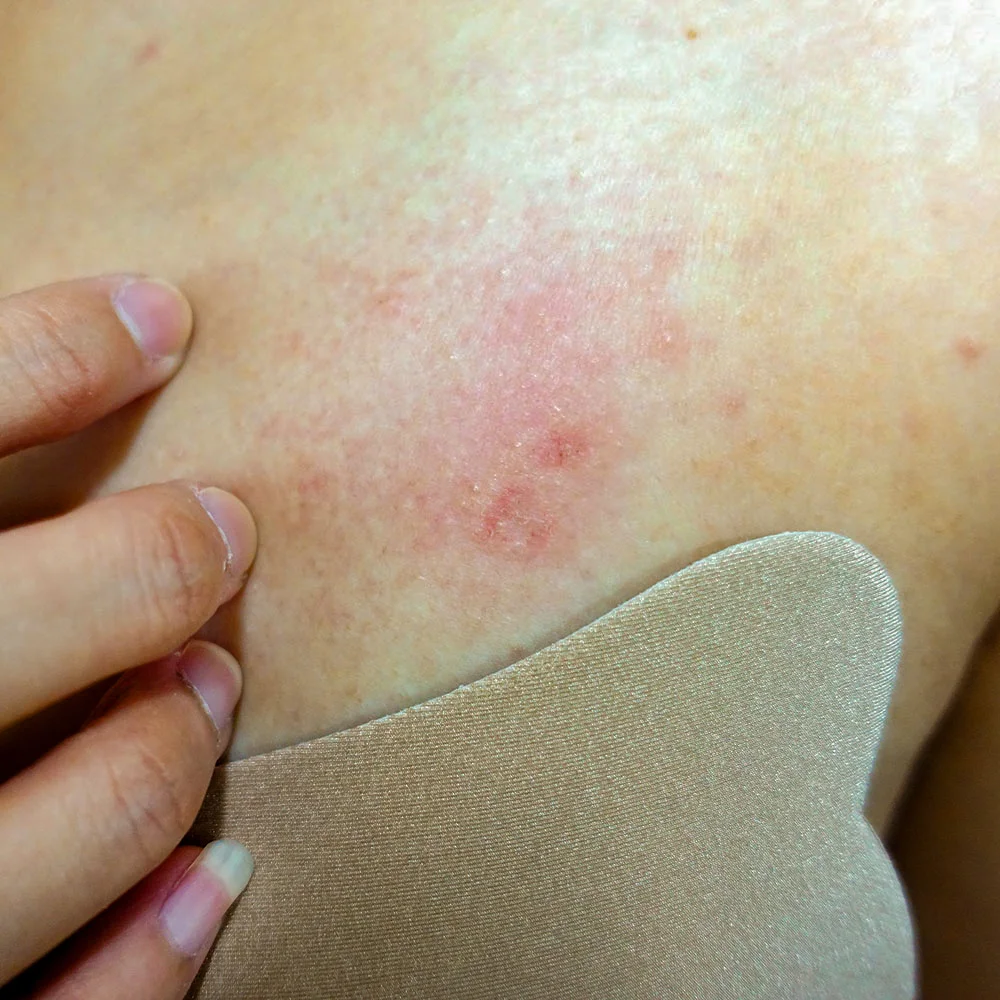Here's what we'll cover
Here's what we'll cover
For many people, your gynecologist is like an accountant. You found a perfectly nice person you keep an annual appointment with, but you'd rather not make any additional visits.
Having a problem with your vagina is more common than you think. And bacterial vaginosis (BV) is actually the most common vaginal condition in women ages 15–44 (Allsworth, 2007).
Treatment typically requires prescription antibiotics to completely resolve symptoms, but there are over-the-counter remedies that may help prevent you from getting BV again in the future.
What causes bacterial vaginosis?
You may have heard that douching––cleansing your vagina with things like vinegar, iodine, or special soaps––is a good idea. But it's not.
Science has proven that these kinds of interventions can upset the delicate balance of microorganisms (such as bacteria) that happily live there. This also increases your risk of developing conditions like BV (CDC, 2020-a).
BV is caused by an imbalance in natural vaginal flora. Because it doesn't come from an outside source, it’s not considered a sexually transmitted infection (STI). You also can't get this condition from pools, hot tubs, or toilet seats.
Since the balance in vaginal bacteria can be affected by a sex partner, having a new partner or multiple ones may increase your risk of developing BV (CDC, 2020-b). Using a condom can help; research has found that consistent condom use is associated with a lower risk of BV (Hutchinson, 2007).
BV isn't typically contagious but can be transmitted between people with vaginas. Past research has found that having a female sex partner may increase your risk of developing BV by 60% (Kairys, 2020).
Overall, BV is considered to be relatively mild, and up to 30% of cases clear up on their own without treatment. Despite this, it's still important to seek medical advice if you suspect something's not right with your vaginal health (Kairys, 2020).
BV is usually treated with antibiotics. Antibiotic pills and creams address the overgrowth of bad bacteria in the vagina and restore the proper balance to alleviate symptoms (Kairys, 2020).
Over-the-counter options for bacterial vaginosis
Since BV results from an imbalance of bacteria, researchers have explored using probiotics (pills that contain microorganisms) to treat BV without needing a prescription.
BV in particular is associated with lower counts of good bacteria, specifically Lactobacilli. While researchers seem to agree there isn't enough evidence to support probiotics as a treatment for BV, there is some proof that probiotics can restore vaginal flora following a course of antibiotics (Kairys, 2020).
Probiotic supplements taken by mouth are generally well-tolerated, so there's little risk in trying this at home. Make sure to look for a product containing Lactobacilli strains, such as Lactobacillus acidophilus (Kairys, 2020).
There are also probiotic pills that can be used as vaginal suppositories, but it’s important to check with a healthcare provider before using this approach.
One study looked at garlic supplements and found they may be just as effective as oral antibiotics for treating BV. Study participants took two 500 mg tablets containing garlic powder every 12 hours for seven days. This OTC treatment was found to be just as effective as antibiotics in treating BV. It also caused fewer side effects in participants compared to the antibiotic treatment (Mohammadzadeh, 2014).
Supplements of this strength are readily available without a prescription, making it an easy option to try at home. The U.S. Food and Drug Administration (FDA) doesn’t regulate supplements, so it's important to purchase from a brand you trust.
Prescription treatments for bacterial vaginosis
Many symptoms of BV mirror those of other vaginal infections, such as yeast infections or STIs like trichomoniasis, chlamydia, and gonorrhea. That’s why it's important to go to a healthcare provider to be properly evaluated.
If they confirm you have BV, you'll likely be prescribed antibiotics like clindamycin (brand name Cleocin), metronidazole (brand name Flagyl or Metrogel), or tinidazole (brand name Tindamax) (CDC, 2020-b).
These medications generally take around 2–3 days to clear up symptoms, but it's critical to finish the entire course of treatment (usually around 5–7 days) as the infection can continue even after symptoms are gone.
Many people have seen BV return even after treatment, and not taking all of your medication may put you at an increased risk.
Some antibiotics are given as vaginal gels. Be sure to discuss considerations of each medication with a healthcare provider as there may be important things to know about treatment. Clindamycin cream, for example, may weaken latex, putting you at an increased risk of contracting an STI or becoming pregnant, despite using a condom (CDC, 2015).
Although antibiotic treatments effectively get rid of BV in up to 90% of cases, studies found it returns within three months in 15–30% of the time.
If BV does return, a healthcare provider may try prescription medications that combine more than one form of antibiotic. Using combination treatments may be more effective at restoring the balance of bacteria in your vagina and stopping the condition from coming back (Wilson, 2004).
What happens if bacterial vaginosis is left untreated?
Though BV isn't an STI, it may increase your risk of getting one––specifically chlamydia or gonorrhea.
This is because any imbalances in vaginal flora make it easier for the bacteria that cause these infections to settle in and spread up. It's a one-two punch, as BV also reduces your immune system's ability to fight off infection, making it easier for pathogens to take hold (Kairys, 2020).
This is especially critical for people who have HIV or have a partner with HIV. BV may increase the risk that you contract HIV from your partner or pass it to a partner if you are HIV positive (CDC, 2020-b).
An increased risk of contracting an STI isn't the only issue with leaving BV untreated. Pregnant women can get BV, which increases the risk of delivering prematurely or having a baby with a low birth weight (which itself can carry a range of complications) (CDC, 2014).
Women who wish to become pregnant in the future also need to watch out for BV as it increases the risk of certain STIs, such as chlamydia and gonorrhea. Left untreated, these STIs can cause pelvic inflammatory disease, a condition that can lead to serious fertility problems in the future (CDC, 2020-b).
Bacterial vaginosis vs. yeast infections
One of the easiest mistakes people make when it comes to BV is thinking it's a yeast infection.
The two conditions have similar symptoms––including abnormal vaginal discharge. A quick way to distinguish between the two is a fishy odor, which points to BV rather than a yeast infection.
It's crucial to figure out which condition you have since yeast infections may be treated with over-the-counter suppositories, while BV generally requires antibiotics.
DISCLAIMER
If you have any medical questions or concerns, please talk to your healthcare provider. The articles on Health Guide are underpinned by peer-reviewed research and information drawn from medical societies and governmental agencies. However, they are not a substitute for professional medical advice, diagnosis, or treatment.
Allsworth, J. E., & Peipert, J. F. (2007). Prevalence of bacterial vaginosis: 2001-2004 National Health and Nutrition Examination Survey data. Obstetrics and Gynecology, 109 (1), 114–120. doi: 10.1097/01.AOG.0000247627.84791.91. Retrieved from https://pubmed.ncbi.nlm.nih.gov/17197596/
Center for Disease Control and Prevention (CDC). (2014, January 23). Bacterial vaginosis - CDC fact sheet. Retrieved Aug 03, 2020 from https://www.umhealthpartners.com/wp-content/uploads/2016/09/bv.pdf
Center for Disease Control and Prevention (CDC). (2015, June 04). Bacterial vaginosis - 2015 STD treatment guidelines. Retrieved Aug 06, 2020 from https://www.cdc.gov/std/tg2015/bv.htm
Center for Disease Control and Prevention (CDC). (2020-a, February 10). CDC - bacterial vaginosis statistics. Retrieved Aug 03, 2020 from https://www.cdc.gov/std/bv/stats.htm
Centers for Disease Control and Prevention (CDC). (2020-b, February 10). STD facts - bacterial vaginosis. Retrieved Aug 03, 2020 from https://www.cdc.gov/std/bv/stdfact-bacterial-vaginosis.htm
Homayouni, A., Bastani, P., Ziyadi, S., Mohammad-Alizadeh-Charandabi, S., Ghalibaf, M., Mortazavian, A. M., & Mehrabany, E. V. (2014). Effects of probiotics on the recurrence of bacterial caginosis. Journal of Lower Genital Tract Disease, 18 (1), 79-86. doi: 10.1097/lgt.0b013e31829156ec. Retrieved from https://pubmed.ncbi.nlm.nih.gov/24299970/
Hutchinson, K. B., Kip, K. E., & Ness, R. B. (2007). Condom use and its association with bacterial vaginosis and bacterial vaginosis-associated vaginal microflora. Epidemiology, 18 (6), 702-708. doi: 10.1097/ede.0b013e3181567eaa. Retrieved from https://pubmed.ncbi.nlm.nih.gov/17917605/
Kairys, N., & Garg, M. (2020). Bacterial vaginosis. Treasure Island, FL: StatPearls Publishing. Retrieved Aug 4, 2020 from https://www.ncbi.nlm.nih.gov/books/NBK459216/
Koumans, E. H., Sternberg, M., Bruce, C., McQuillan, G., Kendrick, J., Sutton, M., & Markowitz, L. E. (2007). The prevalence of bacterial vaginosis in the United States, 2001-2004; associations with symptoms, sexual behaviors, and reproductive health. Sexually Transmitted Diseases, 34 (11), 864–869. doi: 10.1097/OLQ.0b013e318074e565. Retrieved from https://pubmed.ncbi.nlm.nih.gov/17621244/
Mohammadzadeh, F., Dolatian, M., Jorjani, M., Majd, H. A., & Borumandnia, N. (2014). Comparing the therapeutic effects of garlic tablet and oral metronidazole on bacterial vaginosis: A randomized controlled clinical trial. Iranian Red Crescent Medical Journal, 16 (7), E19118. doi: 10.5812/ircmj.19118. Retrieved from https://www.ncbi.nlm.nih.gov/pmc/articles/PMC4166107/
Wilson, J. (2004). Managing recurrent bacterial vaginosis. Sexually Transmitted Infections, 80 (1), 8-11. doi: 10.1136/sti.2002.002733. Retrieved from https://sti.bmj.com/content/80/1/8










